Discover the biennial on mainland Helsinki
The Helsinki Biennial exhibition on Vallisaari Island is accompanied by artworks on mainland. The artworks are situated in several locations around Helsinki, for example at HAM Helsinki Art Museum, Senate Square, and Central Library Oodi.

©Janet Echelman, 1.78 Madrid, 2018. Courtesy of the Artist and Studio Echelman. Photo by João Ferrand.
1
Janet Echelman: 1.78
Location: Senate Square
Dates: 31.7.–31.8.2021
1.78 is the title of Janet Echelman’s sculpture installation that will be suspended high above Senate Square in downtown Helsinki. It is part of Echelman’s Earthtime series – works based on scientific data that are meant to remind us of our complex interconnectedness with larger cycles of time and the systems of our physical world. The number in the title refers to the number of microseconds that the Earth’s day was shortened as a result of a single physical event – the shifting of the earth’s tectonic plates which caused an earthquake and tsunami, and also shifted the speed of the earth’s rotation.
Echelman’s sculpture will be accompanied by sound artist Tuomas Norvio’s sound installation Empathy for the Fish and Others. The installation will combine an underwater soundscape, streamed from Vallisaari Island, and wind data simultaneously measured at the Senate Square.
The sound installation will be audible to visitors daily at the Senate Square via a public address system; at night, it can be listened to via headphones connected to a mobile device.
On 19 August, the opening night of Helsinki Festival 2021, Echelman’s sculpture and a concert by Hildá Länsman, Tapani Rinne, and Tuomas Norvio will be accompanied by a unique world of sounds and visuals driven by live wind data.
Tuomas Norvio’s sound installation and the concert by Länsman, Norvio, and Rinne is a collaboration between Helsinki Biennial and Helsinki Festival.
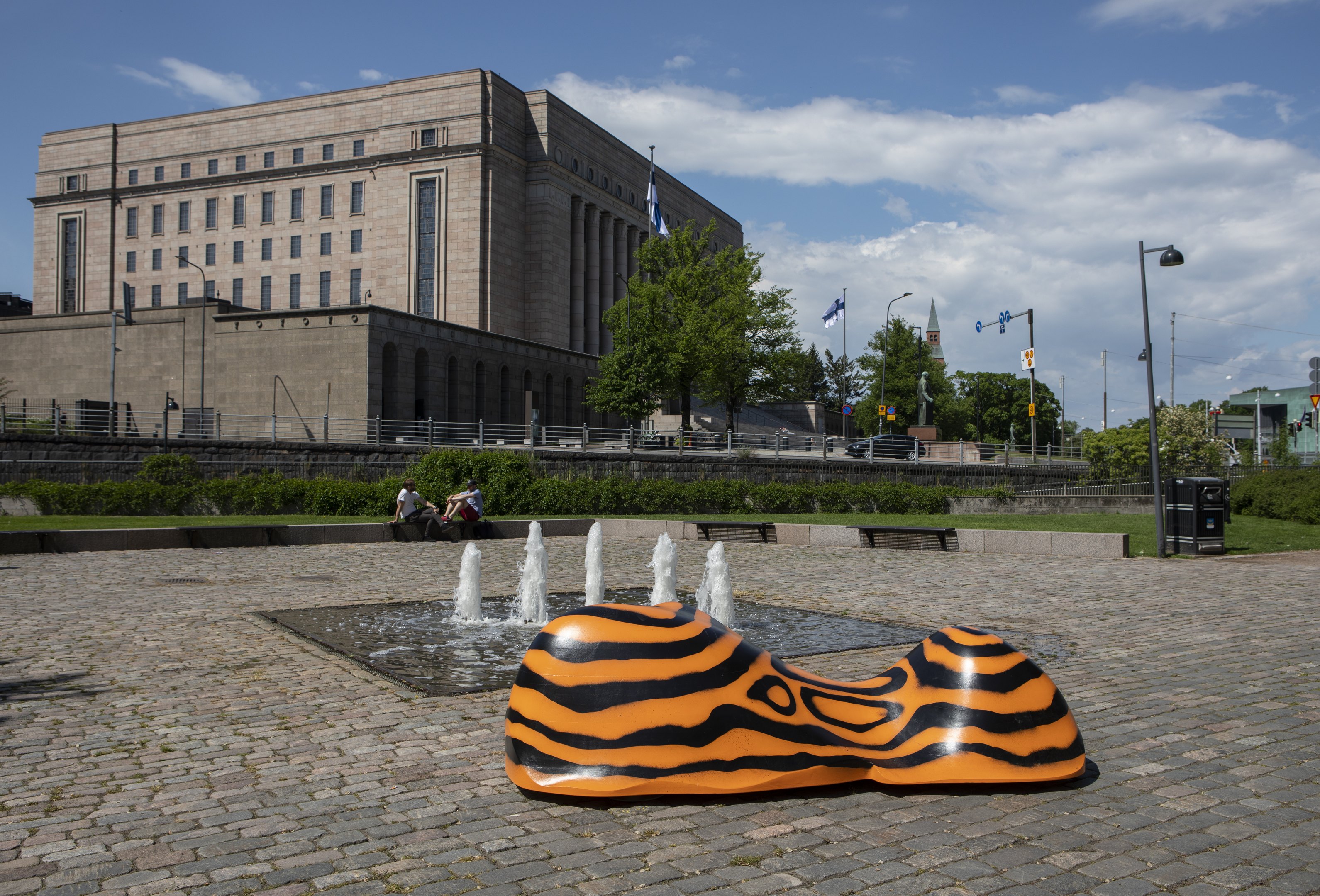
©Maija Toivanen/HAM/Helsinki Biennial 2021
2
EGS: Archipelago of Past and Future
EGS’ work for Helsinki Biennial takes a look at Helsinki through the dual lens of history and possible future scenarios. Spread across many districts of Helsinki, Archipelago of Past and Future consists of eight sculptures representing lost islands or possible islands of the future. Five of them are situated on former islands that have been swallowed up by urban development.
All that remains of their former identity are names such as Laukkasaarenkatu and Sompasaari (saari is Finnish for ‘island’). Three sculptures represent possible islands that could emerge in the future if Helsinki’s sea level rises drastically. One of the sculptures is located on Vallisaari Island.
Sculpture locations:
Kellosaari: Ruohonlahdentori
Hietasaari: In front of Länsiterminaali (West Terminal)
Laukkasaari: At the corner of Mastokatu and Linnankatu in the Katajanokka district
Kana: Parrulaituri Pier – on the outer parts of the pier
Sompasaari: At the corner square of Aallonhalkoja and Kapteeni Sundmanin katu
Kapitalismin karikko (Dire Straits of Capitalism): The eastern end of the Theatre Esplanade Park, the tip of the park’s centre axis
Kansanvallan luoto (Isle of democracy): The Finnish Parliament Annex (Pikkuparlamentti) Park, a paved area next to the Parliament Building
The Island of Last Winter: Vallisaari, the picnic area
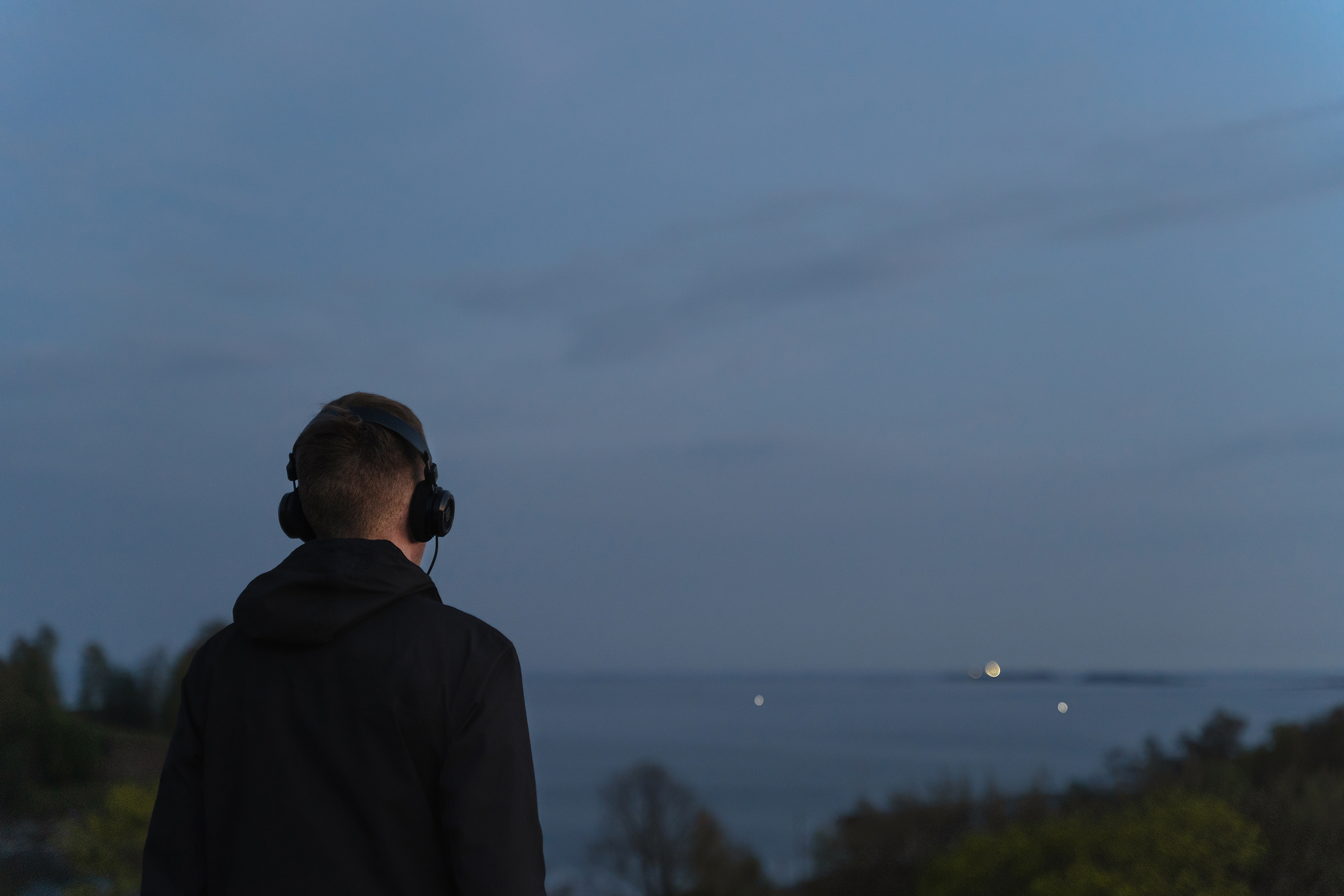
©Mark Niskanen ja Jani-Matti Salo: A Scene II, 2021. Photo: Niskanen & Salo.
3
Niskanen & Salo: A Scene ll
Location: Observatory Hill in Kaivopuisto Park
The second part of the work A Scene by Helsinki Biennial artists Mark Niskanen and Jani-Matti Salo can be experienced at the Observatory Hill in Kaivopuisto Park starting an hour after sunset and ending at sunrise.
Visit the website ascene.fi on your mobile phone. Find the location next to the observatory where you can see the sea horizon as widely as possible. Listen to the composition while watching the night view. Please use headphones.
A video installation of the work A Scene can be experienced on Vallisaari Island during Helsinki Biennial’s opening hours until 26 September 2021.
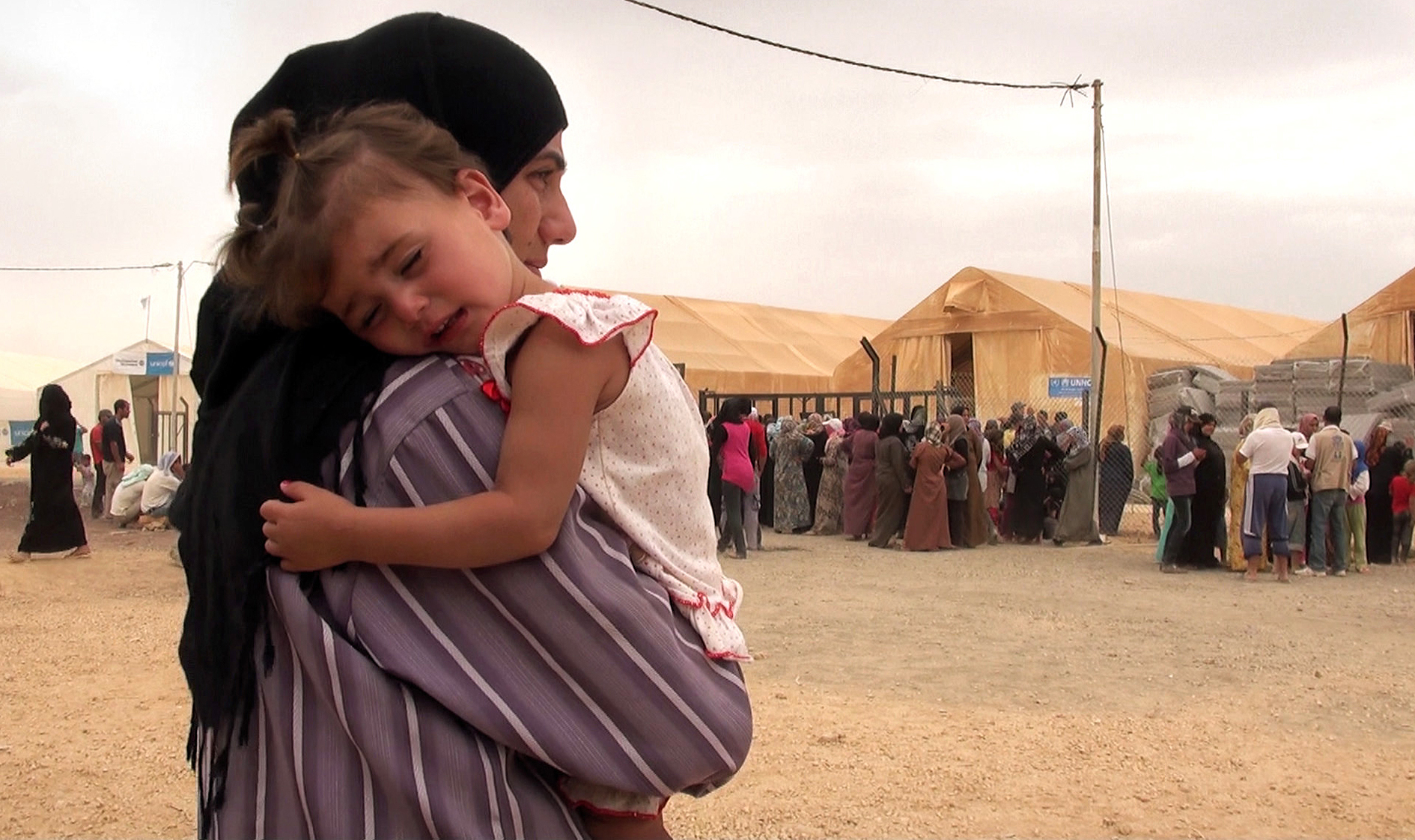
©Mario Rizzi. Film still of the work Al Intithar (The Waiting), 2013. Courtesy the Artist & Sharjah Art Foundation.
4
Mario Rizzi: BAYT (KOTI/HOME)
Location: HAM Helsinki Art Museum/HAM Hall and Vallisaari
HAM shows BAYT (HOME), the film trilogy of Mario Rizzi, as part of the Helsinki Biennial. The trilogy is shown repeatedly in the HAM Hall when the museum is open. Al Inithar, a film included in the trilogy, as well as Rizzi’s photos can also be seen in Vallisaari’s Luotsitalo.
In the first film of the trilogy BAYT, Al Intithar (The Waiting, 2013), home is reduced to a tent in a refugee camp in the middle of a Jordanian desert. The film follows seven weeks in the life of its main protagonist, Ekhlas, a relentless woman who has fled the Syrian war together with her three children. The tragic ramifications of the war are felt keenly in the daily lives of the refugee family.
In the second film, Kauther (2014), we meet the Tunisian activist Kauther Ayari, the first activist to give a passionate and inspired voice to Tunis rioters during the 2011 Tunisian Revolution. She shares her thoughts on life, the build-up of 2011 and the conditions of being a woman in Arabic society.
The third film of the trilogy, The Little Lantern (2019), was shot in Beirut and tells the story of an 84-year-old Danish woman, Anni Høver Kanafani, who travelled to Beirut in the 1960s to meet the acclaimed Palestinian writer, poet and activist Ghassan Kanafani. She married him and has been living in Lebanon throughout all her life, choosing the Beirut refugee camps as her “home”. After her husband’s death, Anni Kanafani continued to work in Palestinian camps – now also crowded by Syrians – creating kindergartens for refugee children.

©Kirsi Halkola/HAM/Helsinki Biennial 2021
5
Rirkrit Tiravanija and Antto Melasniemi: THE SEA THAT YOU SEE IS NOT WHAT THE OTHERS SEE
Location: HAM Helsinki Art Museum/HAM Corner, Tennis Palace
Rirkrit Tiravanija and Antto Melasniemi have transformed the HAM Corner space into a total work of art revolving around food, events, and encounters. Cooking and eating are a shared aesthetic experience. The mushrooms growing on the logs will be used as ingredients in the dishes. The concept is itself mushroom-like, rhizomally reaching out through the sharing of food, impulses, and communication. The space has been executed in collaboration with ARTEK, and it will continue to function as HAM’s open lounge and event space after the biennial.
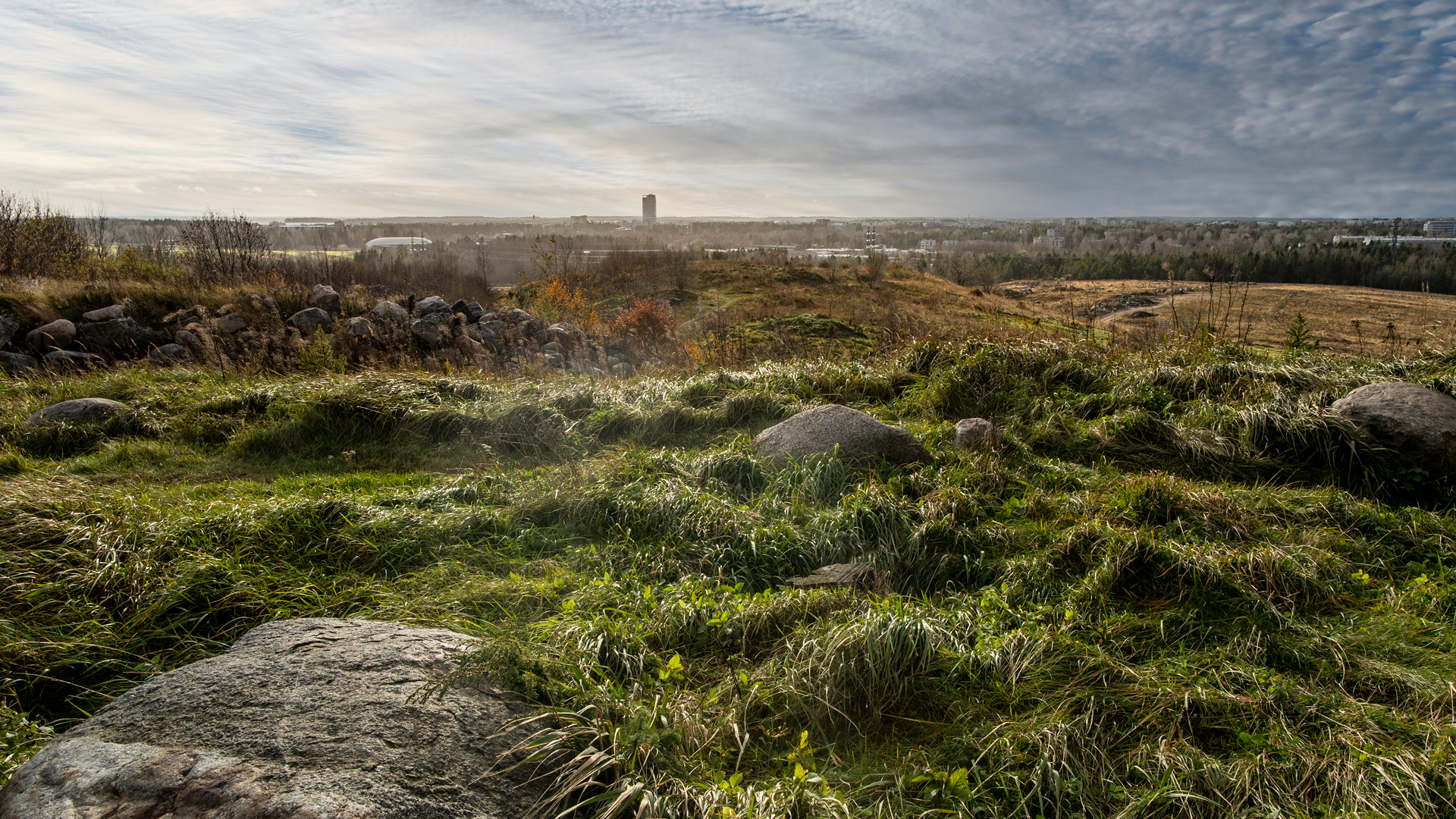
©Matti Pyykkö/HAM/Helsinki Biennial 2021
6
WAUHAUS: A Great Mess
Location: Vuosaarenhuippu
Performances in August and September:
24.8. / 26.8. / 27.8. / 28.8. / 29.8. / 31.8. / 1.9. / 2.9. / 3.9. / 4.9.
A Great Mess is a site-sensitive performance staged by the WAUHAUS arts collective on a hilltop called Vuosaarenhuippu, a former landfill that has been converted into a recreational area. The hilltop provides sweeping views of the surrounding woodlands, suburbs, water towers, cranes, containers, and ships coming and going in Vuosaari Harbour. Over decades of urban development, the site has served as a dumping ground for surplus excavation material – earth, boulders, stumps, and trees – in a process during which the park has evolved into a unique ecosystem shaped through continuous human interaction.
The performance approaches the site as a historically unique multispecies meeting place. It looks at how the place came into being through the interaction of soil, countless organisms, and human imagination.
A Great Mess visualizes how the vast web of interdependencies in which we exist with other species has gradually evolved and continues to evolve each day.
A Great Mess forms part of a series that the WAUHAUS collective will be working on during the upcoming years. The works will transport viewers to locations ranging from landscaped landfills and seagull-populated beaches to a silent, abandoned power plant. Their performances mark an uncompromising attempt to understand how humans fit in as part of a multispecies continuum. Their works are not narratives lamenting the destruction wreaked by modernization, but a sincere effort to fathom how we can foster new life skills in the era of eco-crisis.
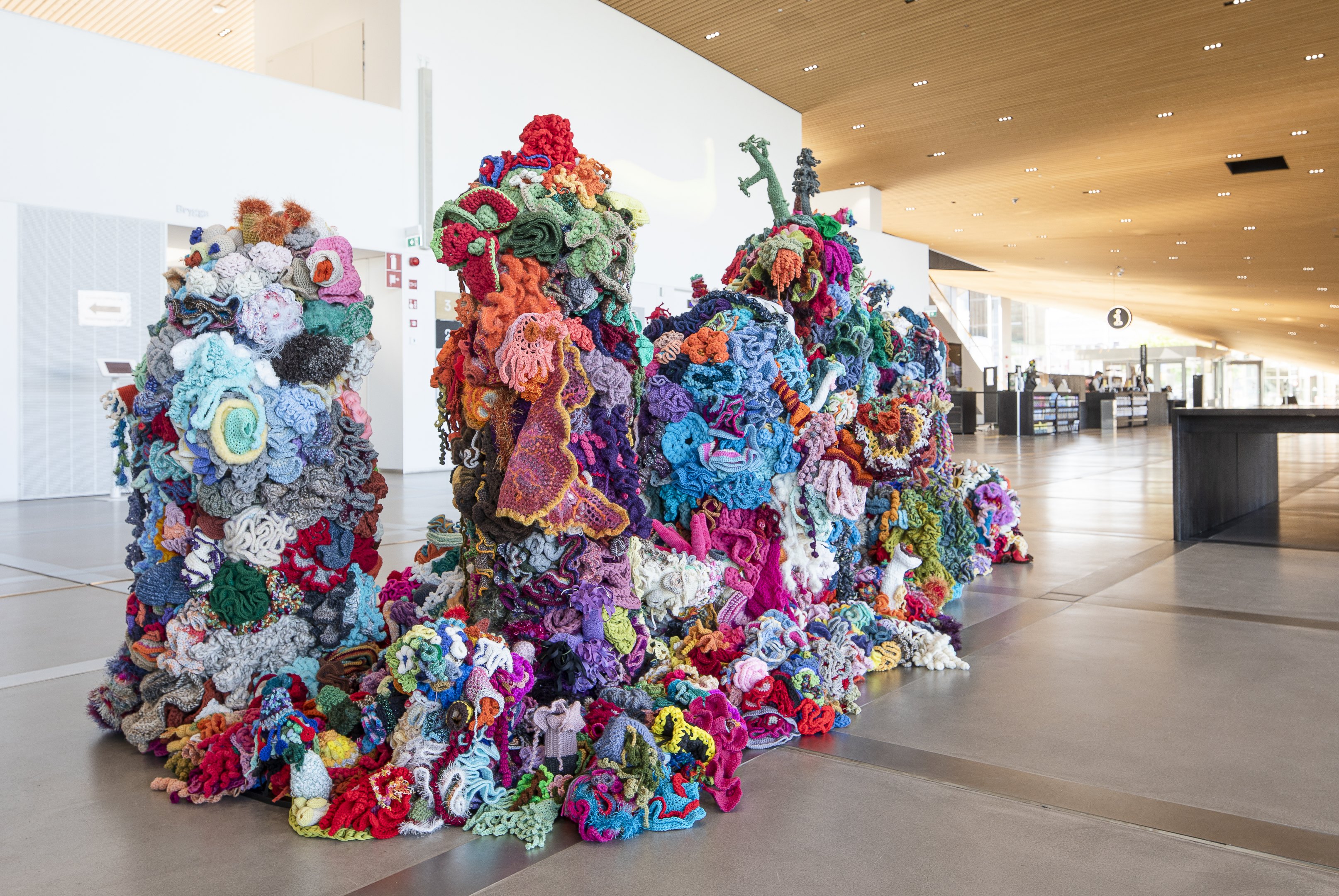
©Kirsi Halkola/HAM/Helsinki Biennial 2021
7
Margaret & Christine Wertheim: Crochet Coral Reef / Helsinki Satellite Reef
Location: Helsinki Central Library Oodi and Vallisaari
Emblematic of Margaret and Christine Wertheim’s work is their global-scale participatory project, the Crochet Coral Reef. This unique intersection of art, science and mathematics marries an exploration of non-Euclidean geometry with traditional handicraft while calling attention to the destruction of coral reefs by climate change. Here, the sisters work with communities around the world to crochet large-scale installations that simulate living reefs.
The crocheted coral reef celebrates nature’s diversity and the power of collaboration. It is also a reminder of the vulnerability of coral reefs and their human-caused destruction. Like real coral reefs, the installation evolved slowly, as a mass collaboration. Over 3,000 people took part in creating Helsinki Satellite Reef, the latest addition to the Crochet Coral Reef project that Margaret and Christine Wertheim have been working on with communities all over the world.
The reef is on display in Helsinki’s Central Library Oodi and in the Alexander Battery on Vallisaari Island.

©Maija Toivanen/HAM/Helsinki Biennial 2021
8
Zodiak presents: Kärkkäinen & Tarvainen: The Wall
Location: Töölönlahti Bay
The Wall by artist Joni Kärkkäinen and choreographer Jukka Tarvainen invites people to encounter art through self-initiated interpretation, interaction, invention, exploration, and movement. The idea for this work is based on the dualistic nature of Vallisaari Island: the public can visit half the island, but the other half is restricted. This dualism inspired the artists to begin playing with the idea of jumping a fence.
Tarvainen will additionally direct Get Down from There – And Other Warnings, a performance staged by professional dancers and parkour athletes and amateur dancers. Open workshops and events will be held at The Wall throughout summer.
